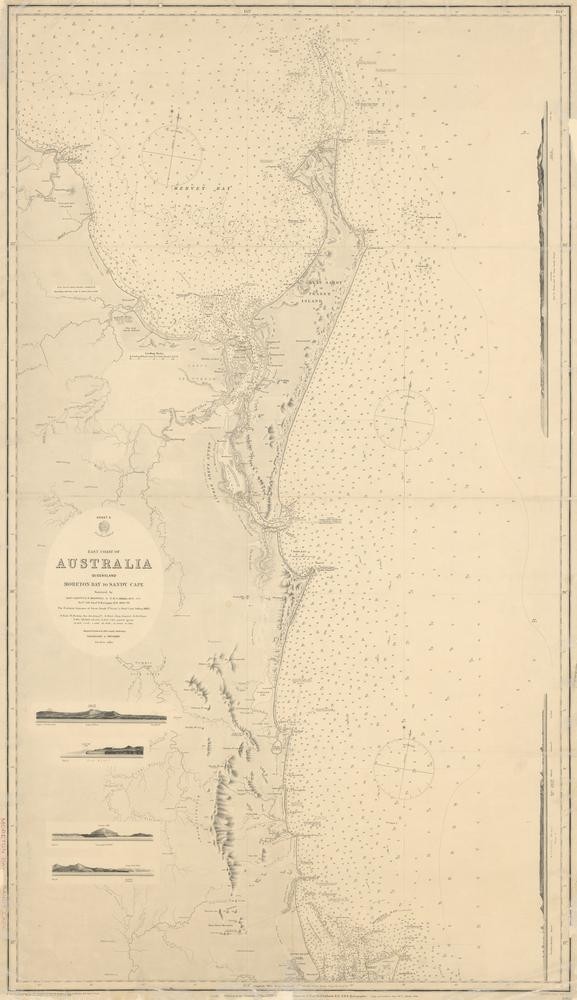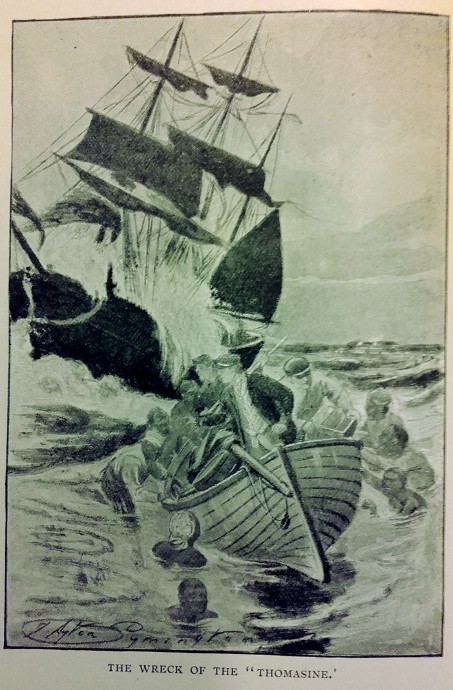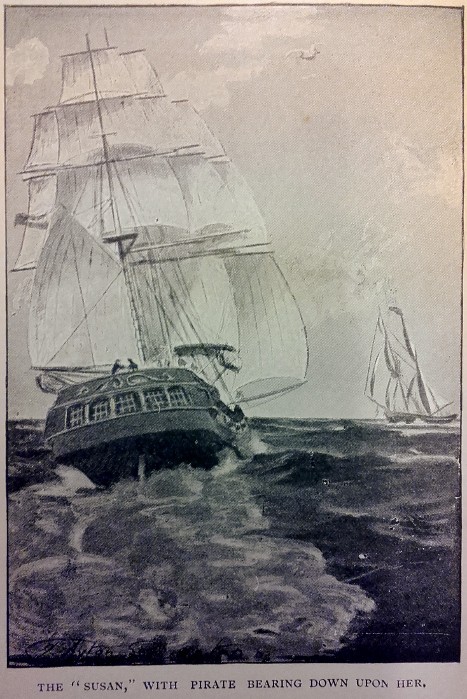Life and adventures on the ocean : shipwrecks and pirates!
By Simon Miller, Library Technician, State Library of Queensland | 19 September 2017
Ahoy Shipmates! It be International Talk Like a Pirate Day once again and so it be fitting to pen a story of adventure on the oceans. Today's nautical adventure comes courtesy of Captain Henry Holmes, who's Life and adventures on the ocean : a personal narrative was published in around 1902.
Being a mischievous, troublesome boy to manage, it was arranged that I should be sent off to sea. A friend of the family was consulted, and to my delight I was to go a trial voyage. So begins Captain Holmes narrative. He goes on to detail his experience on that early voyage, but the book also deals with some later episodes in his seafaring life. In The story of the discovery of Holmes' Reefs our narrator describes how he discovered these reefs off the coast of Queensland by being shipwrecked on them.
This adventure takes place in 1853 when Captain Holmes was owner and Captain of the barque "Thomasine". After being chartered by the Spanish Government to take a cargo to Port Isabella in the Philippines and suffering mutiny and desertion of the crew, Holmes secured a new crew and a cargo of tea in Hong Kong and sailed to Sydney. It being the time of the gold rushes there was no difficulty in finding men willing to sail to Australia. Holmes had his wife and three children aboard including youngest daughter Thomasine, born on the voyage. Armed with a brand new Admiralty Chart and a new crew composed of Malays, Manilla men, and one Bengali, Holmes set sail, intending to pass through Torres Straits and return to China in search of a new cargo.

East coast of Australia Queensland Moreton Bay to Sandy Cape, John Oxley Library, State Library of Queensland
Sadly Holmes' new Admiralty Chart proved less than complete in the marking of dangerous reefs off the coast of Queensland and somewhere outside the Great Barrier Reef close to where Cairns is now situated the ship ran into difficulties.
I looked at my watch, and told the second officer to strike eight bells. No danger was then in sight, but the man had hardly finished when the ship struck heavily three or four times. Nothing was to be seen in the way of breakwaters. I took it to be a mushroom reef, and, fearing there might be something ahead, I altered the ship's coarse to the westward, at the same time directing a good look-out to be kept. I went to my cabin to look at the Chart, but was quickly called back on deck by the cry of "Breakers Ahead." I found that right ahead and also both right and left, there stretched a long line of white rolling breakers, upon which, to my horror, I found we were approaching very close.
The Captain found the ship surrounded by reefs. I made every effort, but, to my mortification, whichever way we went, the terrible reef confronted us, compelling me to "go about" every quarter of an hour. This trying operation had to be repeated from eight o'clock until daylight next morning, for only by the strictest vigilance could we hope to escape being dashed upon the reefs. Indeed, had this been our fortune, the night being dark, all might have perished. By the efforts of Captain and crew the ship was kept off the reefs till dawn revealed the extent of their danger. I was now surrounded by two immense reefs, separated by one or two miles, thus forming a gulf ten or twelve miles deep. These were united at the Northern end by a thin ridge of coral with narrow openings from which I was about three miles distant. I was thus in a trap, with danger on all sides, and, to all appearance, with no hope of escape. And yet the scene before me at daybreak was grand. The deep blue water, the long range of white rolling breakers, and the blue sky above presented a scene unspeakably grand and impressive, though under the circumstances terribly dispiriting.
With the wind increasing and no apparent means of escape from their predicament the Captain determined to attempt to run through an opening in the ridge connecting the two reefs, but unfortunately the opening was only superficial and the ship struck heavily, and with an awful crash. The Captain saw to the launching of the ship's two boats with considerable difficulty and the loading of a bag of biscuits, a beaker of water, a small quantity of preserved mutton and a compass.

Captain Holmes divided the crew and supplies between the two boats and headed north in an attempt to reach Booby Island in Torres Strait where there were supplies kept for shipwrecked sailors. It was the 20th of June when the ship went down and by the 6th of July they had reached Bird Island off Cape York where they met up with the Dutch ship "Bato". They had had a difficult journey with limited food and water, little shelter and inadequate clothing and with the Captain's wife and three young children on the boat. The two boats were often separated but each time they managed to find each other and were all taken on board the Dutch ship and delivered safe to Batavia.
Captain Holmes also tells the story of an encounter with pirates in the year 1832. This adventure takes place in the Atlantic Ocean on board the ship "Susan" homeward bound from Calcutta to London. The ship left St. Helena Island in convoy with a group of ships as it was known that a pirate ship was operating in the area. However after a few days the ships, which varied greatly in their sailing speed, were all separated. Two days after they parted with the last of the convoy a sail was sighted.

The "Susan" with pirate bearing down upon her
A large brigantine under a cloud of canvas bore down on our starboard beam, and, as she drew near, all doubts as to her character were dissipated when we saw the heavy gun amidships and her decks crowded with men. The "Susan" was made ready with uniformed sentries armed with muskets placed on each quarter of the deck and powder and shot ordered up for the canons.
The daring way in which he bore down on us with his black flag and crossbones unfurled at the main, and the gun ready for action, made us expect he was going to open the ball without parley. But when he saw the muzzles of our four guns on the starboard side, and sentries on the poop and forecastle, he bore away round our stern on to our port beam, and, after taking survey of our fighting display, dropped into our wake, following pretty closely.
After following for some two hours the pirate ship sailed away in search of easier prey. It was lucky that the pirates had not pressed their attack as it turned out that the powder magazine was empty. The eight guns and tons of shot were worthless because there was no gunpowder!
All's well that ends well. The last known European pirate had left us. How had we escaped from his clutches? Not by force, but display of strength, our four guns on either side, and sentries on poop and forecastle giving the "Susan" a man-o'-war appearance sufficient to deter a well-armed pirate, the terror of merchant ships.
Simon Miller - Library Technician, State Library of Queensland
Comments
Your email address will not be published.
We welcome relevant, respectful comments.